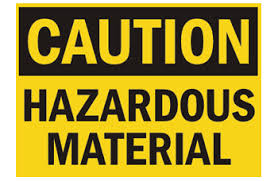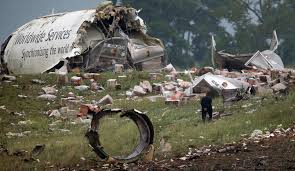
“Are the items in the box fragile?”
“Is there a replacement value?”
“Have you ever shipped there before?”
“What are you shipping? Does it contain any liquids, perishables, flammables, lithium batteries, explosives or other hazardous materials?”
It may seem like we’re being nosey, but in reality we’re asking so many questions to ensure you have a great shipping experience. No one wants to get a phone call saying their package didn’t make it because it ignited on a truck and melted all the packages around it. There is a certain way to pack certain items and ship them; especially in terms of hazmat or hazardous material. The intended receiver certainly won’t appreciate such a phone call either.
We also ask for safety reasons. It’s our job to protect the shipping stream from absorbing illegal and hazardous packages that could damage other packages or, worse, the people who handle the packages. Shipping hazardous material is very dangerous when the package goes on a plane. Temperature change and air pressure can have a serious and sometimes fatal effect on different chemicals and materials. The carriers have very specific rules for these items and they must be adhered to or a tragic ending could occur.
Several cases of planes crashing due to improperly packed items igniting–mainly lithium batteries–has brought the issue to forefront of the major carriers.

One of the most notable cases happened to a UPS 747-44AF cargo plane that crashed on September 3, 2010. According to a recent article republished by RS News, the plane was transporting 81,000 lithium batteries that caught on fire shortly after leaving Dubai. The fire disabled the oxygen supply to the crew and filled cockpit with smoke in three minutes. Both crewmembers were killed in the crash. Something similar happened on February 7, 2006 when another UPS plane limped in to Philadelphia after reports of a fire in the cargo area.
Failure to state what’s being shipped at the counter can result in the loss of lives during transit. It’s become such an important issue that the Post Office requires all of their staff to ask The Hazmat Question. You may have heard it before if you’ve shipped anything out of your local Post Office lately (at least you should have heard it). The question is as follows:
Does this parcel contain anything fragile, liquid, perishable, or potentially hazardous including lithium batteries and perfume?
If any employee is caught not asking it, they can be fired or suspended for a substantial period of time. It’s that serious. While it may seem harsh, the goal is to make the customer realize what they’re shipping could be dangerous to other packages or employees. Just because something was shipped to you does not mean you can ship it out nor can certain authorized ship centers.
Ammunition is a good example. You can ship it, but according to FedEx you have to go through training, become certified, and then receive a special Ground account. Even then you can only go to a FedEx owned and operated facility to ship the item; not a third-party shipping center.
So how do you know what can and can’t be shipped? It’s extremely difficult with new products coming out all the time. Rules and policies are always changing due to our ever-evolving global landscape. Add into the mix specific rules for specific countries that vary on a daily basis and you have a recipe for confusion and frustration if you’re doing it on your own. It’s nearly impossible to know what items are classified as hazardous material.
If you’re not sure whether you can ship a certain item or how it needs to be packed because it may be hazardous, call your local shipping center and ask for help. If they don’t have the answer they will gladly reach out to their carrier representatives and get an answer for you.
Together we can clean up the shipping stream by following guidelines and answering truthfully about the contents of our shipment. Everyone benefits from following the proper procedures for shipping hazardous material. It gives satisfaction to the people we ship to as well as those who do the heavy lifting for us because they can operate safely and securely knowing the front line people did their job and asked the right questions. An improved shipping stream leaves more time for major carriers to develop new equipment and methods of moving packages from A to B rather than doing inspections on crashed planes and investigations on improper shipping.
So we’re left with one more question to ask . . .
“Will you help us improve the shipping environment and protect everyone handling your shipment by telling us what you’re shipping?”


